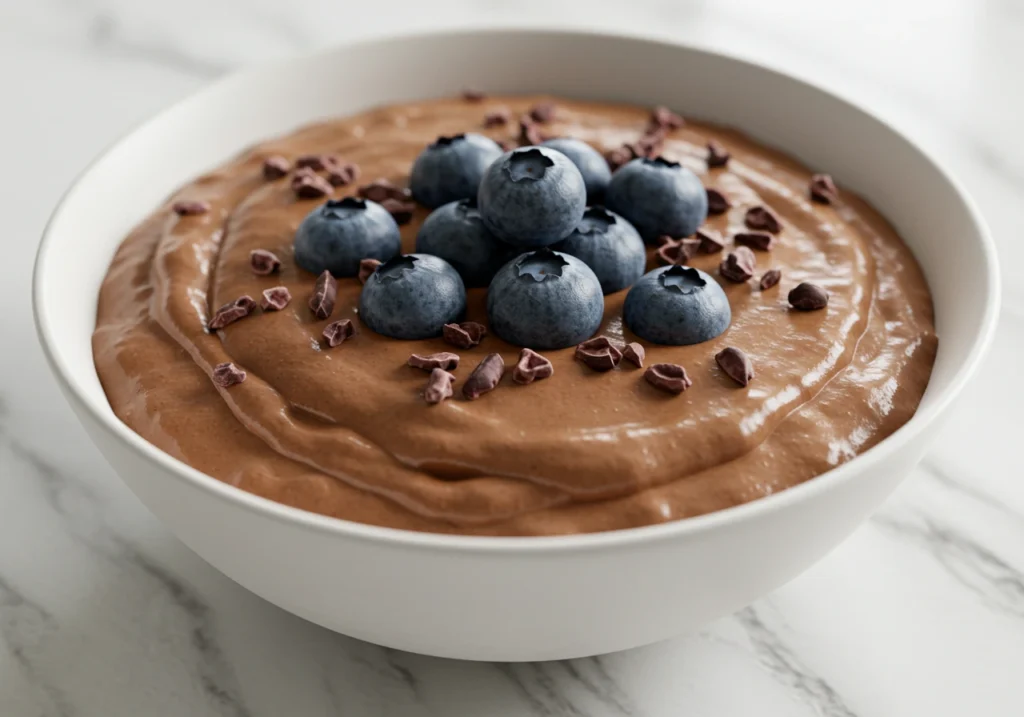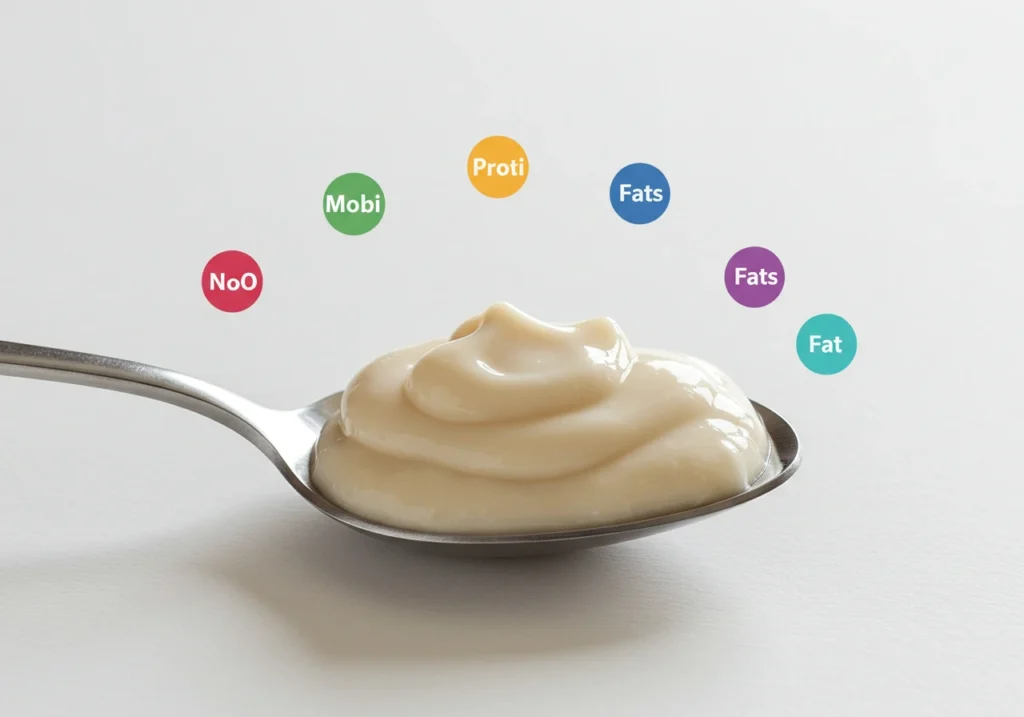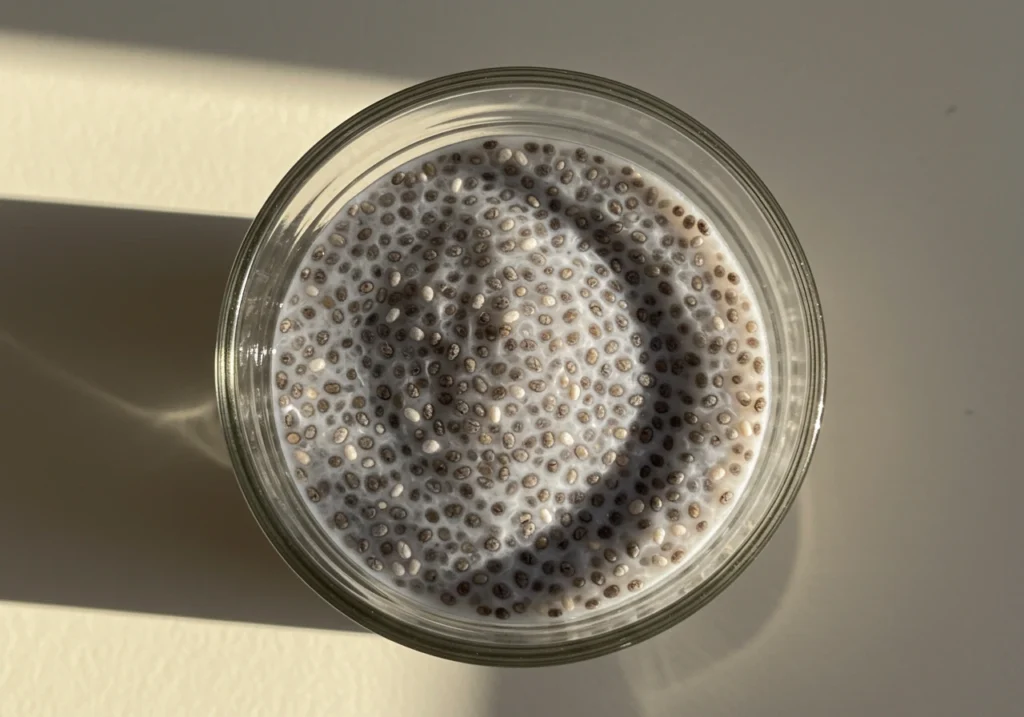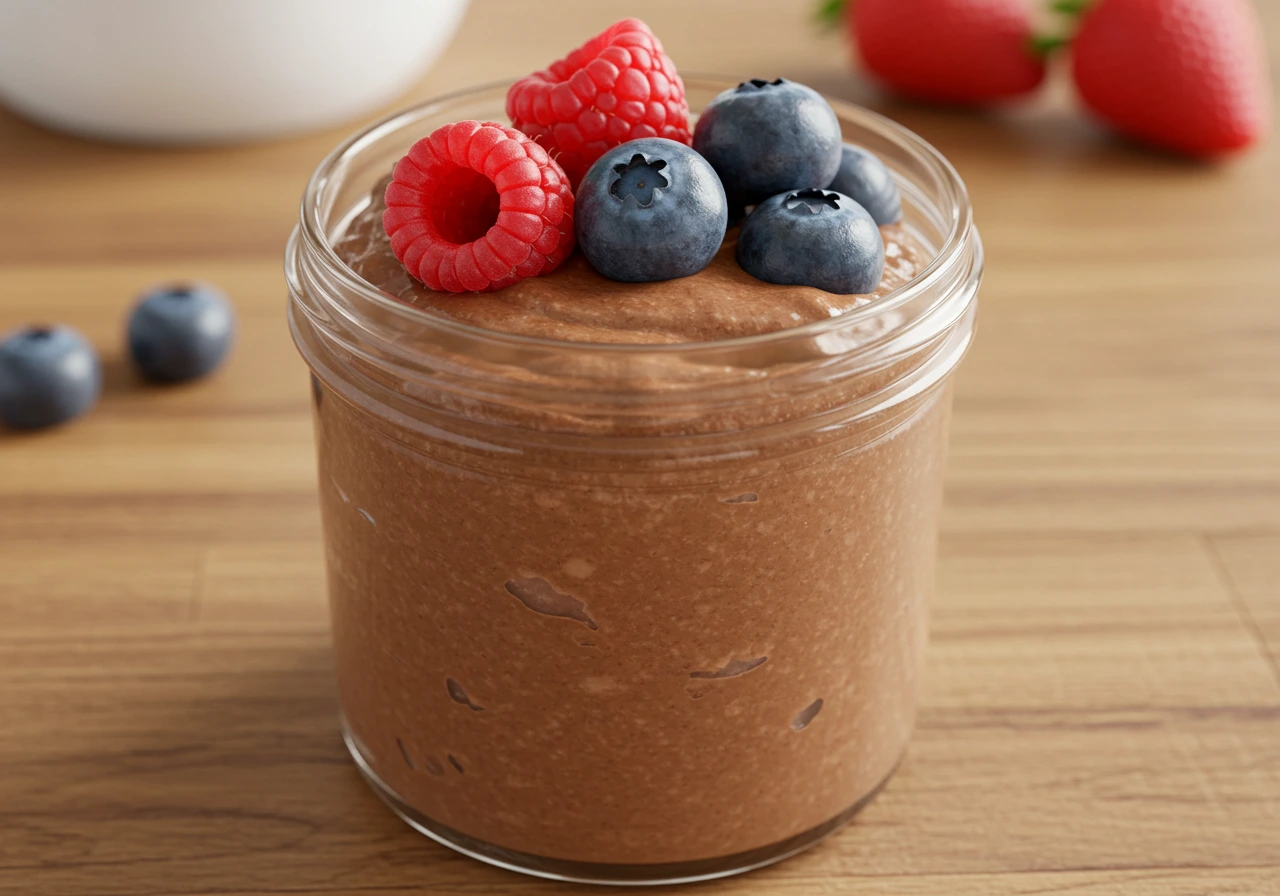Who says desserts can’t be healthy? If you’re someone who craves sweetness but wants to stick to your fitness goals, a protein pudding recipe might just become your new best friend. This article will walk you through everything—from the creamy magic of making your own pudding to smart variations for every diet type. Based on my own kitchen experiments (yes, I tried it and yes, it’s worth it!), I’ll also share practical tips, FAQs, and variations that even the pickiest eaters will adore.
Expect to learn not just how to whip it up, but why it works wonders for your health, fitness, and taste buds. Packed with high-protein content, customizable ingredients, and mouthwatering flavors, this dessert proves that indulgence and nutrition can go hand in hand.
So, without further ado, let’s dig into the first part of this tasty journey.
Part 1: Understanding Protein Pudding
What Is Protein Pudding?
At its core, protein pudding is a smooth, creamy dessert made by blending protein-rich ingredients—like Greek yogurt, cottage cheese, or protein powder—with flavorful additions such as cocoa, vanilla, or fruit. Think of it as a guilt-free twist on your favorite classic puddings, but with a macro-friendly spin.
Instead of loading up on sugar and starch, this pudding gets its thick texture from naturally thick dairy or plant-based alternatives. And the best part? You can tailor it to fit almost any dietary lifestyle—vegan, keto, low-carb, or even dairy-free.
Unlike store-bought options filled with artificial sweeteners and preservatives, homemade protein pudding lets you control every ingredient. Plus, it’s way cheaper and tastes just as indulgent.
Why Protein Pudding is Worth the Hype
Honestly, I was skeptical at first. But after trying different recipes and flavor combos, protein pudding quickly became a staple in my kitchen. Here’s why:
- It satisfies dessert cravings without wrecking your macros.
- It’s incredibly versatile—eat it for breakfast, a midday snack, or post-workout fuel.
- It’s quick to prep and easy to batch for the week.
- It’s customizable—whether you’re into chocolate, vanilla, peanut butter, or fruit-based desserts, there’s a version for you.
A Creamy Treat That Fits Your Fitness Goals
You don’t need to be a fitness junkie to enjoy it, though. Even if you’re just trying to reduce sugar or sneak in extra protein, this pudding does the trick. With just a handful of wholesome ingredients and five minutes of prep, you’ll have a dessert that not only tastes like a cheat meal—but fuels your body like a clean one.
And let’s be real, it feels pretty awesome when your dessert doubles as recovery food.
Part 2: Understanding Protein Pudding
What Is Protein Pudding?
Protein pudding is a modern twist on the classic dessert, designed for anyone who wants to enjoy creamy, sweet satisfaction while also supporting their health and fitness goals. At its heart, this recipe blends high-protein sources—such as Greek yogurt, cottage cheese, or protein powder—with a few simple extras like cocoa powder, natural sweeteners, and your favorite toppings. Unlike the boxed pudding mixes or even some old-fashioned stovetop puddings, this version skips most of the sugar, heavy creams, and processed thickeners in favor of real food that actually fuels your body.
Traditional puddings rely on ingredients like sugar, cornstarch, and whole milk to achieve their texture and sweetness. However, protein pudding flips the script, focusing on high-protein and lower-calorie alternatives. For instance, Greek yogurt lends creaminess and a hefty protein boost, while a scoop of whey, casein, or plant-based protein powder adds flavor and texture. Plus, you can toss in things like chia seeds, nut butters, or mashed banana to boost fiber and richness, keeping you fuller for longer.
If you’re wondering about the taste, here’s the good news: it’s just as luscious and spoonable as the classic kind—maybe even better! Take it from folks like MattsfitChef, Glamour’s healthy food column, and The Big Man’s World®, who all rave about how protein pudding recipes bring dessert back into the lives of fitness enthusiasts and foodies alike.
Benefits of Protein Pudding
High Protein Content for Muscle Repair and Satiety
One of the shining advantages of protein pudding is, you guessed it, the protein. Whether you’re an athlete, a busy parent, or simply trying to build a better breakfast, the extra grams of protein in this dish help repair muscles, keep you full, and power you through your day. Studies show that eating higher-protein snacks can reduce cravings and help with weight management, making this treat a win-win.
Low Sugar and Customizable to Dietary Needs
Unlike many desserts, protein pudding is extremely flexible when it comes to your dietary preferences. Want to go low-carb or keto? Use unsweetened almond milk, stevia, and a scoop of your favorite low-carb protein powder. Need a vegan version? Plant-based yogurt and vegan protein work perfectly. With endless combinations, you can fine-tune the sweetness, texture, and flavor to your liking—no need for processed sugar bombs.
Convenient for Meal Prep and On-the-Go Snacks
Let’s be honest, life gets busy. That’s why protein pudding recipes are a meal prepper’s dream. You can whip up a big batch, divide it into jars or containers, and stash it in the fridge for several days. It’s grab-and-go at its finest: just spoon, top, and eat—no reheating, no fuss. Whether you’re heading to work, the gym, or chasing after the kids, protein pudding fits neatly into your routine.
And that’s just the beginning! As we move forward, you’ll see how these simple, healthy ingredients can turn into a luscious treat that rivals even the fanciest desserts—without the sugar crash. Ready to get your shopping list together? In Part 3, we’ll cover the essential ingredients you need to make a foolproof, crave-worthy protein pudding.
Part 3: Essential Ingredients
Core Ingredients for Protein Pudding
When it comes to crafting the perfect protein pudding recipe, it all starts with the base ingredients. The magic lies in balancing texture, taste, and nutrition—and trust me, once you get the hang of it, you’ll be mixing like a pro in no time.
Greek Yogurt: The Creamy Powerhouse
First up, let’s talk about Greek yogurt. This thick and tangy delight isn’t just delicious—it’s loaded with protein, typically offering 10 to 20 grams per serving. Its naturally dense consistency makes it the perfect base for puddings. It also brings a creamy texture that mimics traditional custards without the need for eggs, cornstarch, or cream. Whether you’re going for plain or vanilla-flavored, Greek yogurt adds richness and a subtle tang that balances sweet ingredients beautifully.
Protein Powder: Pick Your Type and Taste
This is where the real gains come in. Protein powder is the secret weapon that bumps this dessert into fitness food territory. You’ve got options:
- Whey: Fast-digesting and silky-smooth, great for post-workout treats.
- Casein: Thicker and slow-digesting, ideal for overnight puddings.
- Plant-based: Vegan-friendly, often a bit grainier, but works wonders with added moisture like almond milk or blended fruits.
For flavor? Chocolate, vanilla, peanut butter, cookies and cream—you name it. Reddit users across food subreddits have shared thousands of combos, and MattsfitChef regularly experiments with new flavors to keep things exciting.
Sweeteners: Keep It Natural
You don’t need heaps of sugar to make this dessert tasty. Natural sweeteners like honey, maple syrup, or monk fruit add just the right touch of sweetness. If you’re counting carbs or calories, stevia or erythritol are excellent substitutes that still keep things guilt-free.
Optional Add-ins
Here’s where you can have some fun:
- Cocoa Powder: A dash of unsweetened cocoa powder transforms your pudding into a chocolate lover’s dream. It’s rich, bitter, and plays perfectly with sweet protein blends.
- Fruits, Nuts, or Seeds: For extra texture and nutrition, add sliced bananas, berries, chopped almonds, or even chia seeds. These ingredients not only taste great but also add fiber, healthy fats, and antioxidants.
Part 4: Step-by-Step Recipe
How to Make Protein Pudding
Now that we’ve covered the core ingredients and tasty add-ins, it’s time to dive headfirst into the process of making your own protein pudding. No blender? No problem. You don’t need any fancy kitchen gadgets—just a bowl, a spoon, and a little bit of patience. With a few minutes and a little fridge time, you’ll be rewarded with a creamy, high-protein treat that feels like a cheat meal but fuels like a champ.

Let’s break it down.
Step 1: Combine Greek Yogurt and Protein Powder
Start with your base: grab about ¾ cup of thick Greek yogurt and plop it into a mixing bowl. Add 1 scoop of your favorite protein powder—chocolate, vanilla, cinnamon roll, whatever fits your craving that day. The Big Man’s World® swears by a good-quality whey isolate to keep things smooth and easy to mix.
Step 2: Add Sweeteners and Optional Flavorings
Now’s the time to flavor things up. Add 1 to 2 teaspoons of your chosen sweetener—honey, stevia, or maple syrup work great. Want to amplify the flavor? Mix in a splash of vanilla extract, a pinch of salt to enhance sweetness, or a spoonful of peanut butter or cocoa powder for richness. MattsfitChef often stirs in mashed banana or even a drop of almond extract for a unique twist.
Step 3: Mix Until Smooth; Adjust Consistency with Milk if Needed
Using a spoon or a silicone spatula, stir the mixture until it’s silky and lump-free. It might take a minute or two of good ol’ elbow grease—don’t worry, it’s worth it. If it feels too thick, slowly add a tablespoon of milk (dairy or plant-based) until you reach your desired consistency. As Easy Macro Meals recommends, you’re aiming for something spoonable, not drinkable.
Step 4: Chill in the Refrigerator for Desired Thickness
This is the secret step to getting that real pudding texture. Pop your mix into the fridge and let it chill for at least 30 minutes—or overnight if you want it ultra-thick. The longer it rests, the better it sets. Carmy from Easy Healthy-ish Recipes even recommends making it in the evening to enjoy the next morning as a grab-and-go breakfast.
Tips for the Perfect Pudding
Choosing the Right Protein Powder to Avoid Grittiness
Some protein powders just don’t blend well. Oh Snap Macros recommends casein for a thicker texture or whey isolate for ultra-smooth results. If you’re going vegan, test a few brands to find one that doesn’t get grainy—mixing with almond milk can help.
Balancing Sweetness and Flavor
Don’t overdo the sweetener. Taste as you go. A little goes a long way, especially if your protein powder is already flavored. If it’s too sweet, a dash of lemon juice can balance things out nicely.
Storage Recommendations for Freshness
Store your pudding in airtight containers or small jars. It’ll stay fresh in the fridge for up to 4 days. For meal prep, portion it out into single servings—you’ll thank yourself later when snack cravings hit.
Part 5: Variations to Try
Flavor Variations
Once you’ve nailed the basic protein pudding recipe, it’s time to unleash your creativity. Seriously—this pudding is like a blank canvas for flavor. Whether you’re craving something indulgent, fruity, or nutty, you can twist the base recipe into something that suits your taste buds and macros. Below are my absolute favorite variations that not only satisfy your cravings but also keep you on track.

Chocolate Delight
If you’re a chocolate lover (like me), this one’s a no-brainer. Add 1 tablespoon of unsweetened cocoa powder to your base recipe. For that extra indulgence factor, toss in a few dark chocolate chips or shavings—just a little goes a long way. The deep cocoa flavor pairs beautifully with vanilla or chocolate protein powder. It’s rich, satisfying, and honestly, tastes like dessert at a high-end café. Bonus: cocoa is loaded with antioxidants.
Berry Bliss
Looking for something light and refreshing? Enter Berry Bliss. Blend ¼ cup of mixed berries—strawberries, blueberries, or raspberries work best—into your pudding base. You can even leave a few chunks for added texture. This version is especially great with vanilla or berry-flavored protein powders. Not only do the berries add a pop of color and flavor, but they also bring in fiber and vitamin C. It’s a fruity, tangy twist that’s as vibrant as it is healthy.
Peanut Butter Swirl
Ah, the timeless combo—peanut butter and protein. Swirl in 1 tablespoon of natural peanut butter (or almond butter if you’re feeling fancy) to turn your pudding into a rich, nutty dream. This variation pairs well with chocolate, vanilla, or banana protein powder. You get creaminess, healthy fats, and a touch of savory that balances the sweetness perfectly. Top it with crushed peanuts or cacao nibs for a satisfying crunch.
Dietary Adaptations
The beauty of protein pudding lies in its adaptability. Whether you’re vegan, keto, or lactose-sensitive, you can tweak the base to meet your dietary needs without sacrificing flavor or texture.

Vegan Option
For a plant-powered pudding, simply use plant-based yogurt (like almond, soy, or coconut) and a vegan protein powder. Add a splash of almond milk to help with blending. Vanilla pea protein or chocolate rice protein works best for creaminess. It might take a little experimenting, but once you get it right—boom—it’s just as creamy and satisfying as the dairy version.
Low-Carb/Keto
Watching your carbs? Go for unsweetened almond or coconut milk, a zero-carb protein powder, and sweeten it with stevia or erythritol. Skip the fruit and stick to ingredients like cocoa powder, nut butter, or flavor extracts to keep it delicious yet keto-friendly. Pro tip: A spoonful of chia seeds can thicken it up while adding fiber and omega-3s.
Dairy-Free
Need to ditch the dairy entirely? No sweat. Use coconut-based yogurt or an almond milk yogurt alternative. These dairy-free options blend beautifully with most plant-based proteins and give a slightly tropical or nutty undertone to your pudding. Try adding a dash of cinnamon or coconut flakes to enhance the flavor.
Part 6: Frequently Asked Questions
Frequently Asked Questions
Let’s clear up the most common questions folks ask when it comes to crafting the ultimate protein pudding recipe. Whether you’re a first-timer or a seasoned meal prepper, these answers will help you avoid confusion and elevate your pudding game.
How to make your own protein pudding?
It’s surprisingly easy—like, ridiculously easy. Start with a base such as Greek yogurt or cottage cheese, then mix in a scoop of your favorite protein powder. Add a splash of almond milk (or any liquid) to smooth it out if needed. Finally, sweeten it with honey, maple syrup, or stevia, and toss in extras like cocoa powder or peanut butter. Stir it all up until it’s creamy, then let it chill in the fridge.
How healthy is protein pudding?
Let’s put it this way: it’s as healthy as you make it. The base ingredients—Greek yogurt, protein powder, fruit, and nuts—are nutrient-dense and can support a variety of goals like muscle gain, weight loss, or simply eating cleaner. It’s low in sugar (especially if you skip the syrup), high in protein, and customizable to nearly every diet type—vegan, keto, low-carb, dairy-free.

Can I mix protein powder with pudding mix?
Technically, yes—but with caution. Traditional boxed pudding mixes contain sugar, cornstarch, and thickeners that may clash with the texture of protein powder. If you’re aiming for a healthier option, it’s best to skip the commercial mixes altogether. Instead, recreate the pudding texture using casein protein or chia seeds, which naturally thicken over time.
Can I use a protein shake instead of milk for pudding?
Absolutely! In fact, using a pre-mixed protein shake is a genius way to infuse flavor and extra protein into your pudding. Just substitute it for the usual almond milk or dairy and add it slowly until you get the right consistency. Chocolate, vanilla, or even coffee-flavored shakes make delicious bases.

